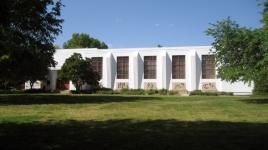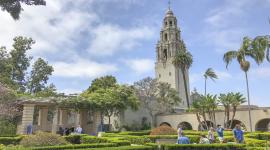Pioneer Information
Born in Carthage, Illinois, Walker studied landscape architecture at Harvard University. Upon graduating in 1917, he joined the Harvard University Reconstruction Unit, where he assisted in Europe's restoration during and after World War I. Following a brief stay in France working under planner Jacques Gréber, Walker returned to the United States where he accepted a teaching position at Harvard University, as well as a position with the landscape architecture and planning firm of John Nolen. Walker assisted Nolen in developing several comprehensive city plans, including one for San Diego, in 1926, developed alongside a plan for the city’s park system. Nolen and Walker also created comprehensive city plans for Columbus, Georgia (1926); Roanoke, Virginia (1928); and Little Rock, Arkansas (1930). During this period, Walker also designed the estate gardens of San Diego philanthropist George Marston, based upon the preliminary drawings of Thomas Church. At the onset of the Great Depression, Walker left Nolen to join the Maryland State Planning Commission, where he became head planner for the cooperative housing development of Greenbelt, Maryland, funded by the federal government’s Resettlement Agency. Completed in 1937, the town was modeled upon garden city planning standards, featuring approximately 900 townhouses and apartments placed on a ridgeline surrounded by a swath of undeveloped land, or ‘greenbelt.’ It was also during this time that Walker released the publication Landscape Architecture: Economy in Design (1932). Following the onset of World War II, he served as a consultant to the Farms Security Administration, a successor to the Resettlement Agency, responsible for defense housing projects. After the war, Walker was hired by the Urban Renewal Administration, where he worked until his retirement in 1960. He was named a Fellow of the American Society of Landscape Architects in 1957. Walker died in Clearwater, Florida, at the age of 76.
















